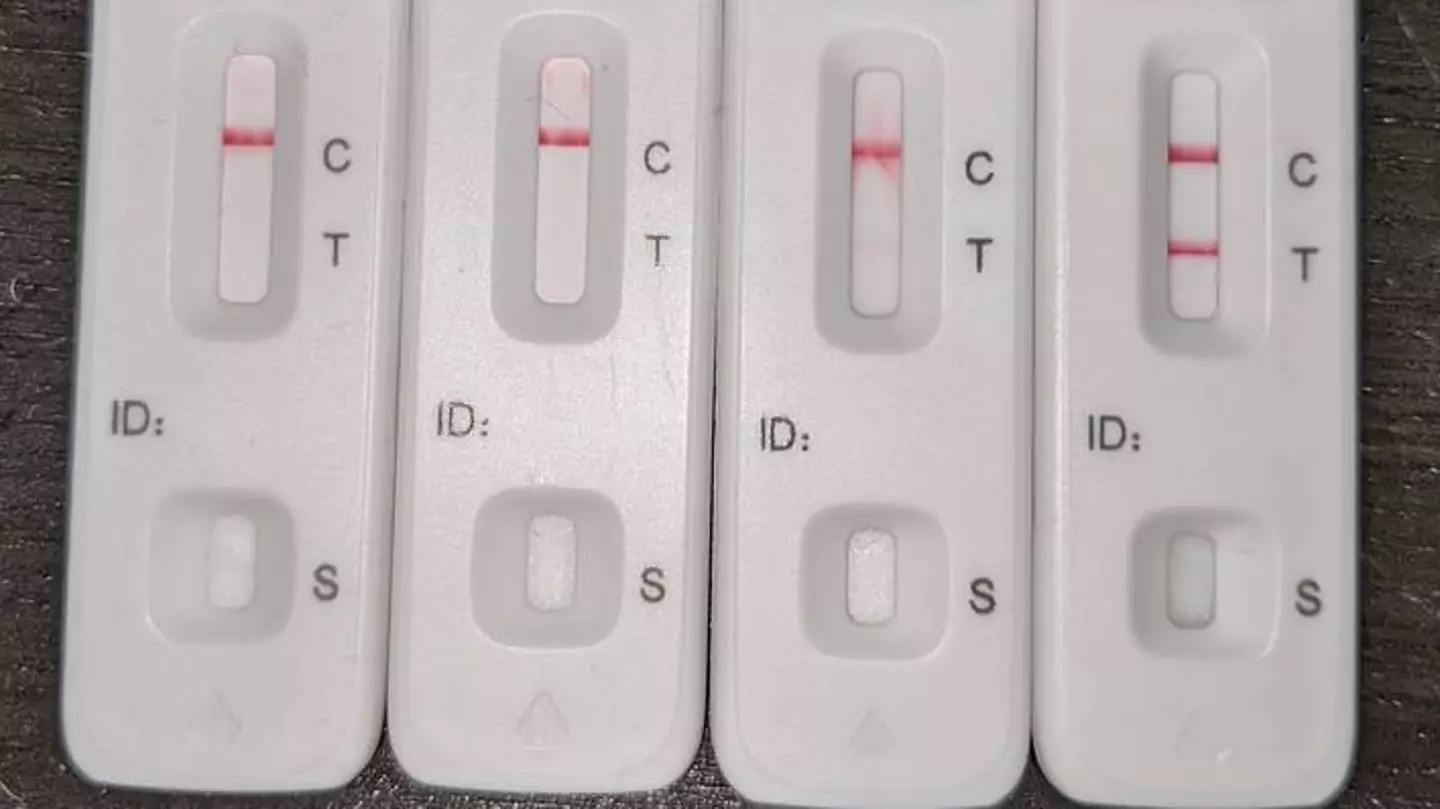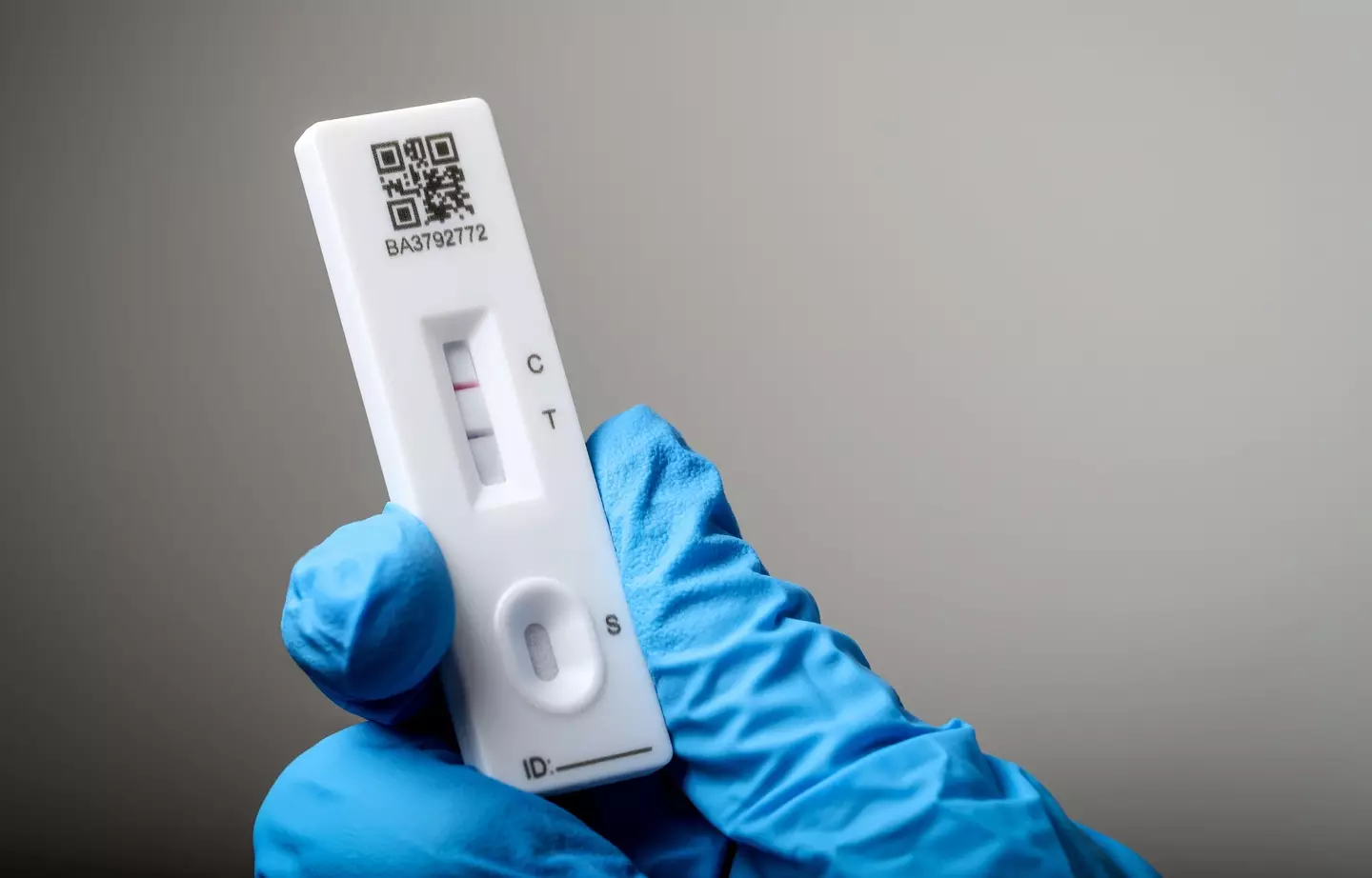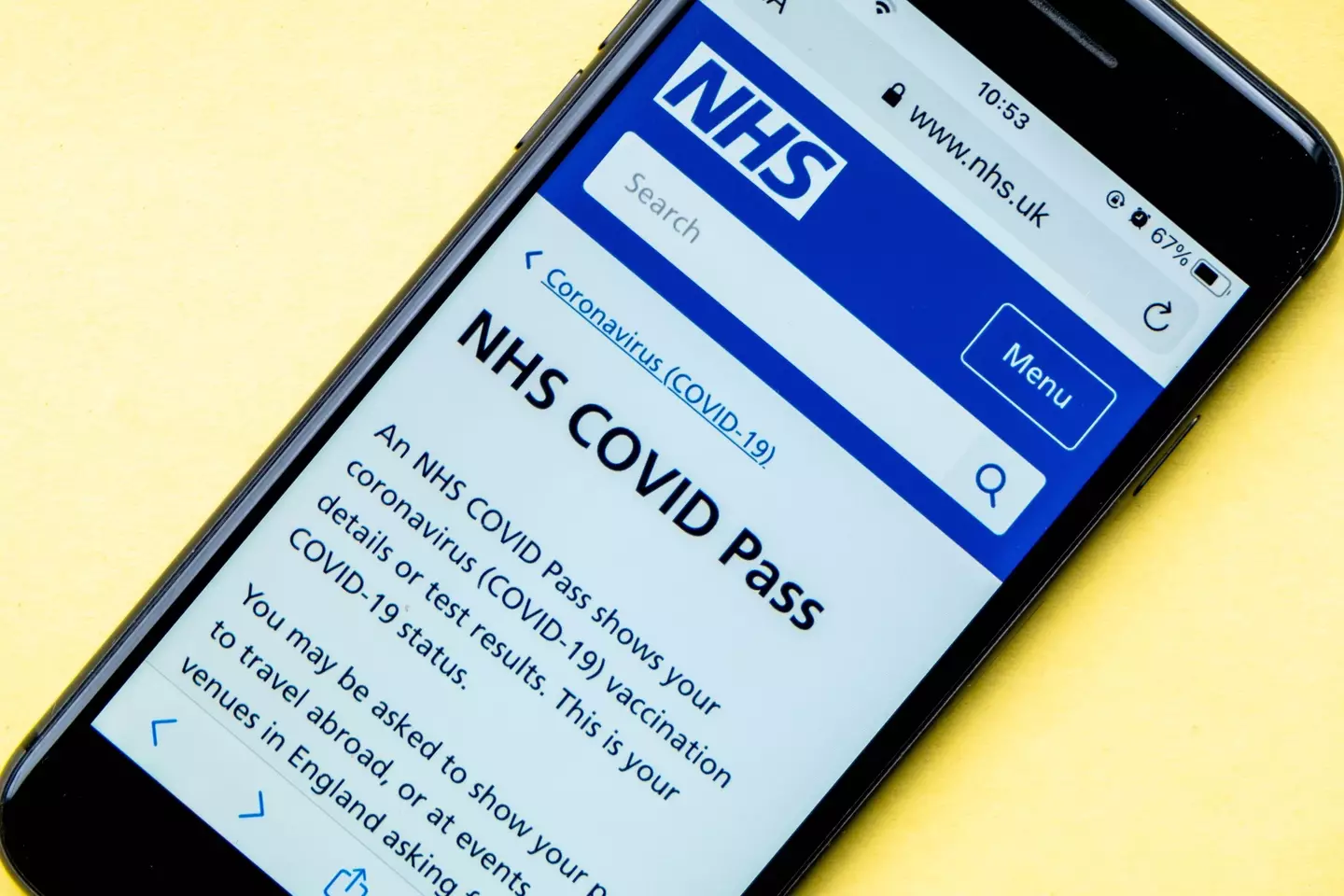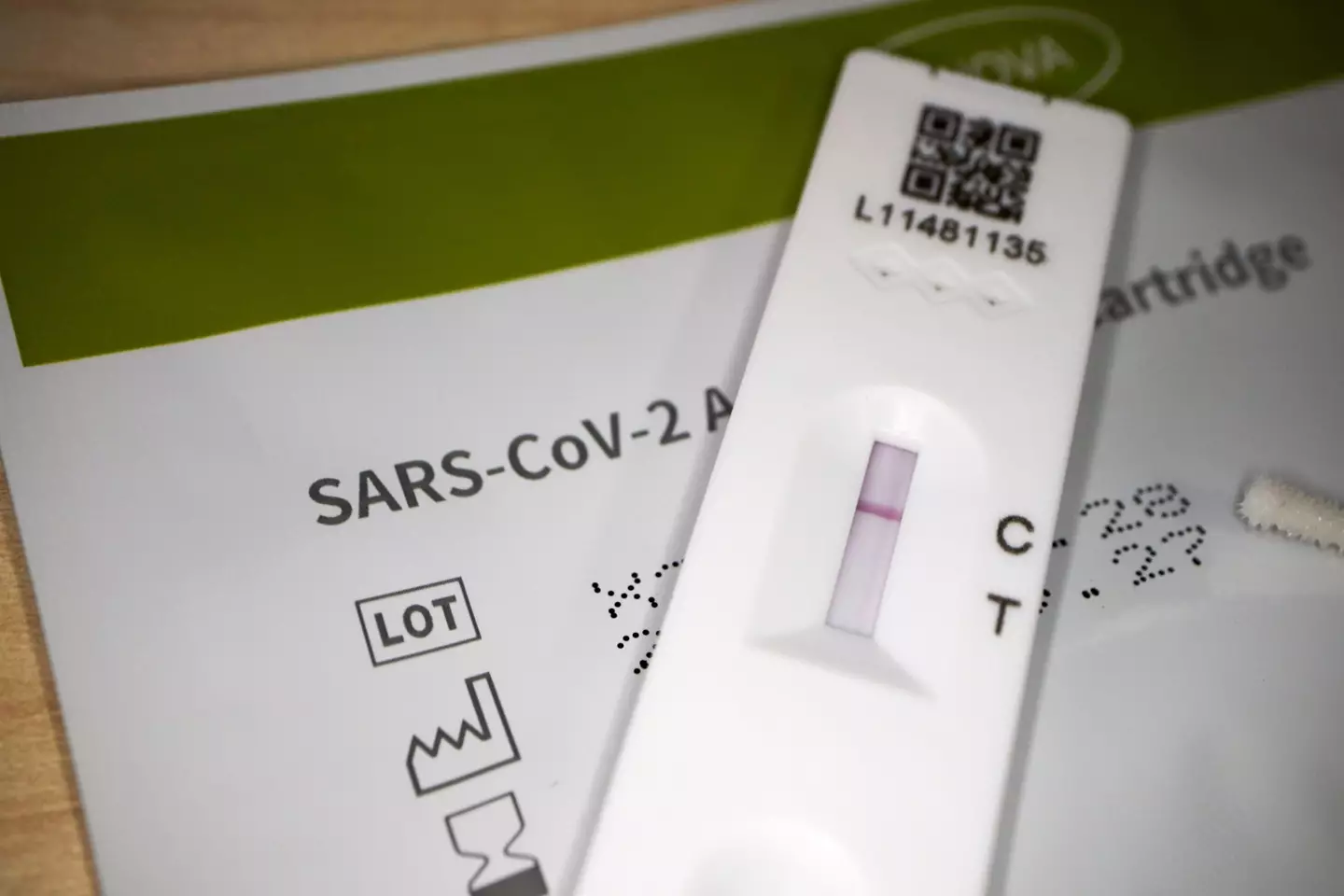
An expert has revealed how quickly your lateral flow result can change by sharing a picture of four tests he took just hours apart.
Billy Quilty, an infectious disease epidemiologist at London School of Hygiene and Tropical Medicine, posted the image as a warning to Brits cases of the new omicron covid-19 variant continue to spread.
He took four lateral flow tests in the same day; the first on Wednesday morning, the second at lunchtime, another one that evening and finally a fourth on Thursday morning.

The first and second test in the lineup are negative, with only one red line next to the 'C'.
Advert
While a faint line can be seen next to the 'T' can be detected in the third test along with a line next to the 'C', this indicates a positive result.
The fourth test clearly shows two lines, one next to 'T' and the other next to 'C' showing a positive result.
He used the picture to urge people to do lateral flow tests just before meeting up with anyone to minimise the risk of spreading the virus.
Billy said: "A demo of how fast you can turn positive: Yesterday morning, yesterday lunchtime, yesterday evening, this morning. Do LFTs *just* before meeting up."

If a person has low levels of the virus in their system, lateral flow tests are less sensitive compared other tests, such as the PCR test which is used for people with symptoms.
Advert
People are most likely to pass on the virus when levels are high, lateral flow tests can detect infection in the vast majority of cases.
According to the government’s website, lateral flow tests are useful for finding out if a person is infectious “now” and is able to transmit the virus to others. T
he level of sensitivity in the test is high enough to detect the vast majority of these cases.
Lateral flow testing is less likely to return a positive result outside the infectious window, unlike a PCR test.
Advert
In recent weeks, Brits have been taking the tests before heading to Christmas parties with colleagues and to see loved ones in the lead to the festive season. The official guidance states users should take the test within 48 hours before the event.
On Wednesday new laws were introduced to help curb the spread of the virus by requiring venues in England to make it compulsory to have a covid pass for entry, either in the form of a negative Covid-19 test or proof of double vaccination.
The rules apply to venues open between 1am and 5am; indoor events with 500 or more unseated attendees; outdoor events with 4,000 or more unseated attendees and any events with 10,000 or more attendees indoor or outdoor, such as large sports and music events.

You can access your Covid-19 pass through the NHS App, NHS.UK, a letter obtained on NHS.UK or by calling 119.
Advert
Lateral flow tests are completed at home and can reveal if you are carrying the Covid virus within 30 minutes of completion with a high degree of reliability.
Current government guidelines advises people to take lateral flow tests before they attend any event where they could spread the virus to other people. You should also take one if you have been in contact with someone who has tested positive, such as a notification via the track and trace app.

What is official guidance around lateral flows?
Advert
If your lateral flow test is positive, you must self-isolate immediately to avoid spreading the virus to others.
You must also complete a PCR test, which is sent to a lab, to confirm if your result is positive. During the lab testing scientists can see whether you are carrying the Omicron variant.
Self-isolation is compulsory until you get the results from your PCR test. You could be fined if you fail to self-isolate after getting a positive PCR test result.
You can read more about the NHS guidelines regarding positive lateral flow tests and PCR tests here.
You can also order a lateral flow test here.
Featured Image Credit: @BQuilty / TwitterTopics: Health, News, Coronavirus
